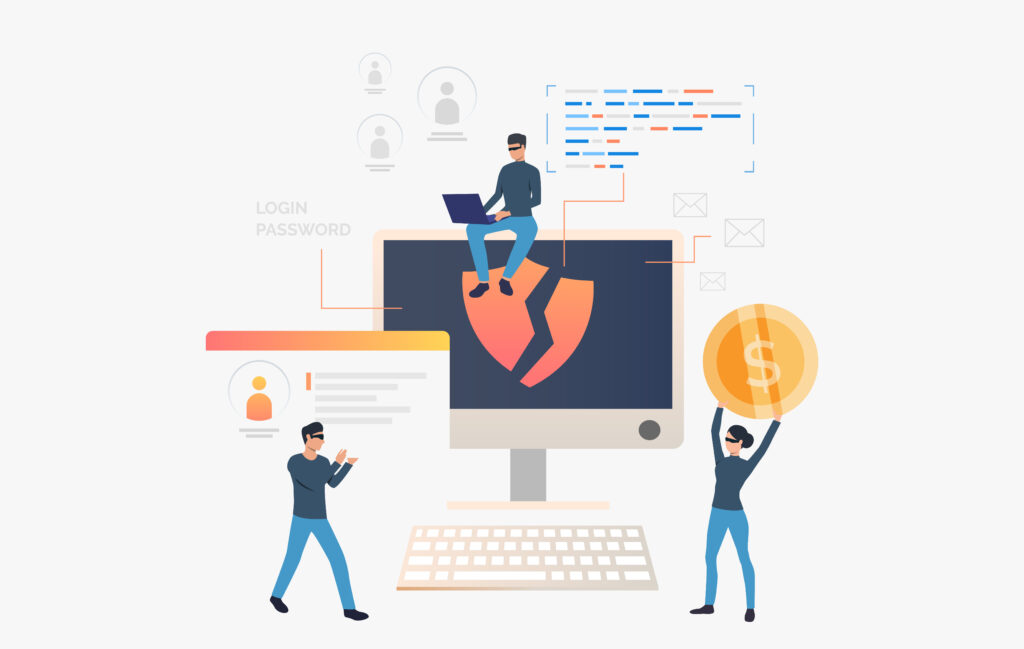In the realm of cybersecurity, where new threats constantly emerge, it’s essential to stay informed about the myriad tactics employed by cybercriminals. One such devious stratagem is “pharming.” Unlike traditional phishing, which lures victims through deceptive emails, pharming operates more subtly, manipulating the very infrastructure of the internet to compromise users’ digital identities. In this article, we will embark on a journey into the shadowy world of pharming, exploring its techniques, implications, and how to guard against this nefarious threat.

The Deceptive Landscape of Pharming
At its core, pharming is a cyber attack that redirects users from legitimate websites to fraudulent ones without their knowledge. The term “pharming” is derived from a combination of “phishing” and “farming,” signifying the cultivation of deceptive online environments to harvest valuable information. Unlike phishing, which relies on baiting victims with deceptive emails, pharming exploits vulnerabilities in the Domain Name System (DNS), the backbone of the internet.
Understanding DNS and its Vulnerabilities
The DNS acts as the internet’s address book, translating human-readable domain names (e.g., www.example.com) into IP addresses (e.g., 192.168.1.1) that computers use to locate websites and services. It’s a vital part of our online experience, allowing us to access websites by simply typing in their names.
Pharming leverages two primary techniques to compromise the DNS:
-
DNS Cache Poisoning: In this technique, cybercriminals exploit vulnerabilities in DNS servers to inject false information into their caches. Once poisoned, these caches direct users to fraudulent websites instead of legitimate ones.
-
Hosts File Modification: Pharmers may tamper with the “hosts” file on a victim’s computer, which maps domain names to IP addresses. By altering this file, attackers can redirect traffic from legitimate websites to malicious ones.
The Implications of Pharming
Pharming has far-reaching consequences, ranging from identity theft to financial fraud and the compromise of sensitive data:
-
Identity Theft: Pharming can lead to identity theft, as victims are often tricked into providing personal information on fraudulent websites, thinking they are interacting with legitimate organizations.
-
Financial Loss: Cybercriminals can redirect users to fake banking or e-commerce websites to steal login credentials and financial information, potentially causing significant financial losses.
-
Data Breaches: Pharming attacks can result in data breaches when victims unwittingly provide access to their accounts or confidential information.
-
Reputation Damage: Organizations whose websites are targeted by pharming attacks may suffer reputation damage, as users lose trust in their online services.
-
Loss of Control: Pharming undermines the fundamental trust in the DNS system, eroding the user’s ability to rely on accurate domain-to-IP address mappings.
Guarding Against Pharming Attacks
While pharming attacks are insidious, there are steps individuals and organizations can take to protect themselves from this threat:
-
Use Secure Websites: Always ensure that websites use secure connections (https://) when entering sensitive information like login credentials or financial data. Look for the padlock symbol in the browser’s address bar.
-
Verify Website Addresses: Carefully check website URLs for accuracy before entering any information. Be especially cautious if a website’s URL looks unusual or misspelled.
-
Use DNS Security Features: DNSSEC (Domain Name System Security Extensions) is a set of security protocols that provide authentication and data integrity for DNS. Enable DNSSEC whenever possible to enhance your DNS security.
-
Regularly Update Software: Keep your operating system, web browsers, and antivirus software up to date to patch vulnerabilities that could be exploited by pharmers.
-
Use a Reputable DNS Server: Configure your device to use a trustworthy DNS server, such as Google DNS (8.8.8.8 and 8.8.4.4) or Cloudflare DNS (1.1.1.1 and 1.0.0.1), to reduce the risk of falling victim to DNS cache poisoning.
-
Monitor Your Online Accounts: Regularly review your bank and online accounts for any suspicious activity. Report any unauthorized transactions or changes to your account immediately.
-
Educate Yourself: Stay informed about the latest cybersecurity threats, including pharming, and be vigilant when navigating the internet.
-
Use a VPN: A Virtual Private Network (VPN) can encrypt your internet traffic, making it more challenging for pharming attacks to intercept and redirect your traffic.
-
Implement Multi-Factor Authentication (MFA): Enable MFA wherever possible to add an extra layer of security to your online accounts.
The Battle Against Pharming Continues
Pharming represents an ever-evolving threat in the digital landscape. As cybercriminals continue to refine their techniques and target both individuals and organizations, it is crucial to remain vigilant. By understanding how pharming operates and implementing robust security measures, you can significantly reduce the risk of falling victim to these cunning attacks.
As technology evolves, so too do the tactics of cybercriminals. The battle against pharming and other cyber threats is ongoing, demanding continuous adaptation and a commitment to cybersecurity best practices. In a world where our digital identities are increasingly valuable, protecting them from pharming and similar threats becomes paramount in preserving our online security and privacy.